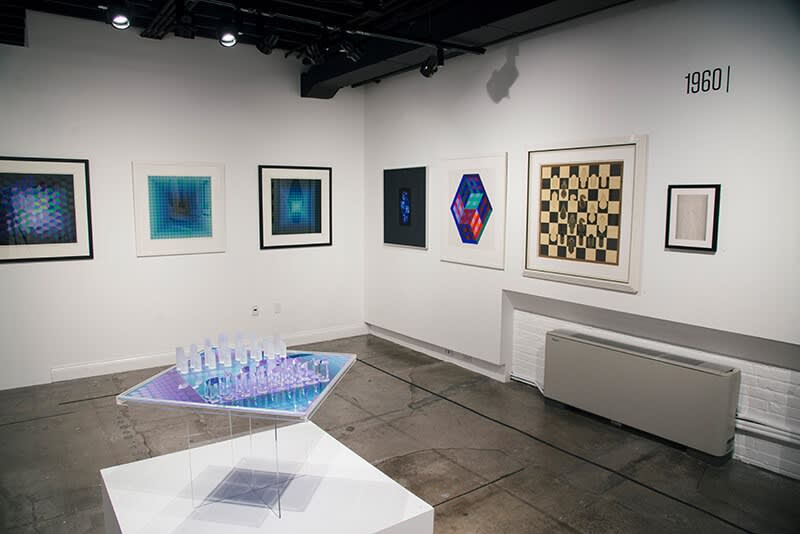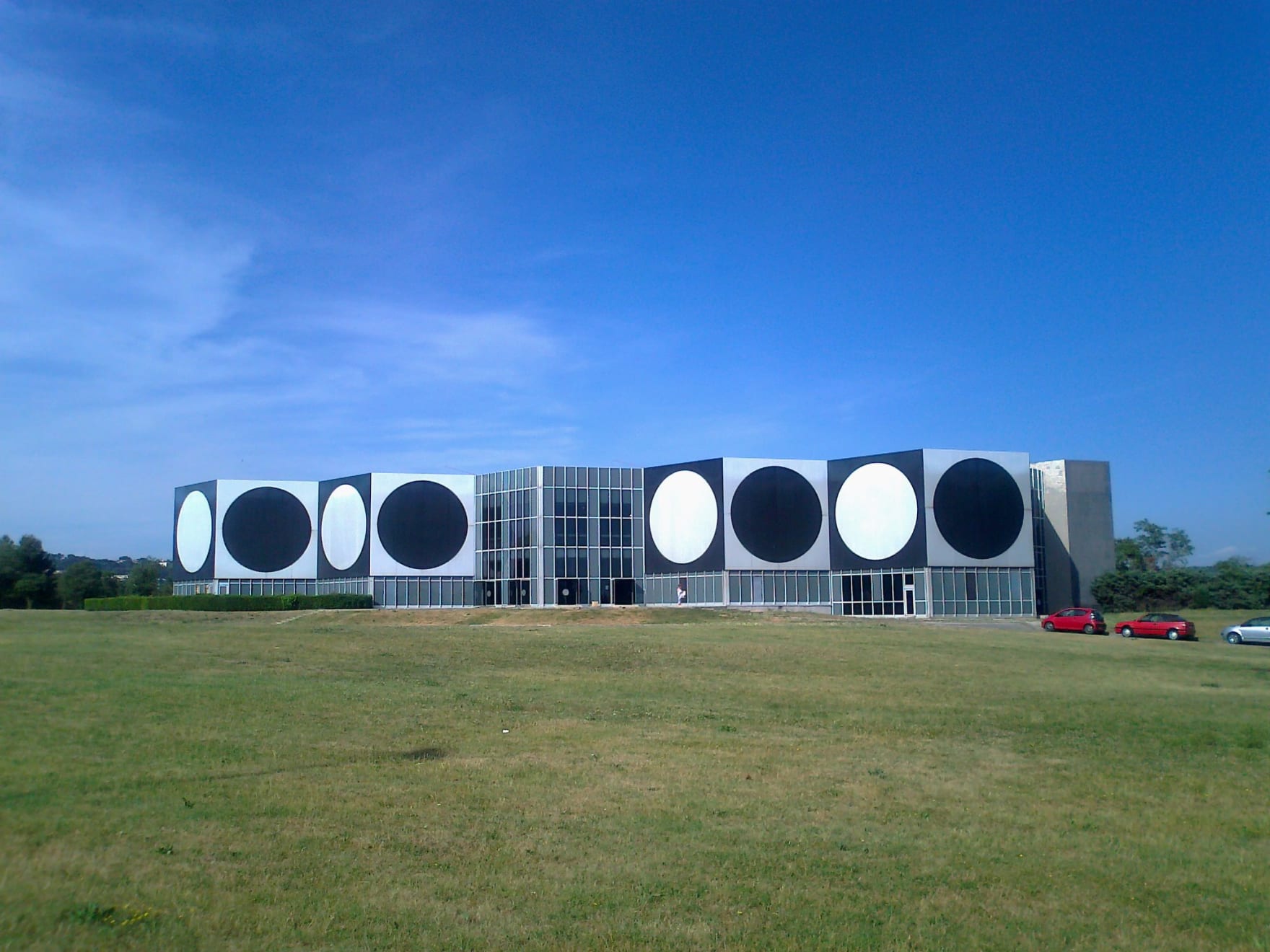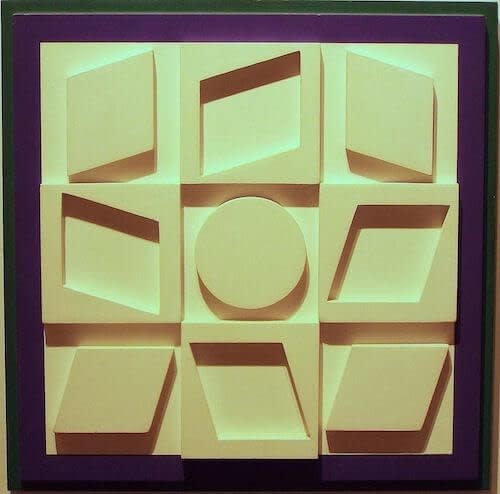Victor Vasarely studied medicine before he studied art. His initial art education, in Budapest, was very traditional, but his scientific mind led him to experiment with colors and optics. Vasarely moved to Paris in 1930, and worked as a talented and successful graphic designer. He credited the intense light of southern France, and the way it affected his vision, with his development of Op Art.
The Chess Board
In order to create the optical patterns he imagined, Vasarely used perpendicular lines for the foundation of his designs. His first Op Art painting, L’Echequier, or Chess Board, was done in 1935. L’Echequier is a painting of an infinite chess board, with chess pieces scattered within the board. The chess board continued to appear in his work, and not just as the underpinning. In 1979, Vasarely created a square chess board with an Op Art screenprinted playing surface, raised on cruciform base, with set of clear and frosted acrylic chess pieces. The set was reproduced in limited edition.
One of the Vasarely chess sets is on display, along with other works that exemplify his use of the chess board, at the World Chess Hall of Fame is St. Louis. The exhibit, called Victor Vasarely: Calculated Compositions will be on exhibit through March 25, 2018.
The Vasarely Foundation Museum is Open and Revitalized…Finally
Victor Vasarely wanted art to be accessible to everyone and, to that end, he decided to start a foundation and build a museum to showcase his art and the works of others. The city of Aix-en-Provence donated the land, and Vasarely built the museum. For decades, the Foundation was plagued by a series of unfortunate events, including embezzlement, fraud, bankruptcy and family feuds over the estate.
Vasarely’s grandson, Pierre Vasarely, was finally named the universal legatee of the Foundation, and he has managed to rebuild the Foundation and revive the museum, which opened in September. The museum is made up of sixteen hexagons, constructed to form seven rooms, to display 42 of Vasarely’s pieces.
There is a Kinetics Room, a Tapestries Room and others, each room exhibiting a theme. Many of the works are huge…as large as 25 feet high and tweet feet wide. The building also has a conference room and an auditorium, where classes, concerts and lectures are held.
Victor Vasarely at VFA
Please contact us for information about the works by Victor Vasarely available at VFA, including Holid, Moire Tower and Dyok Positif.






